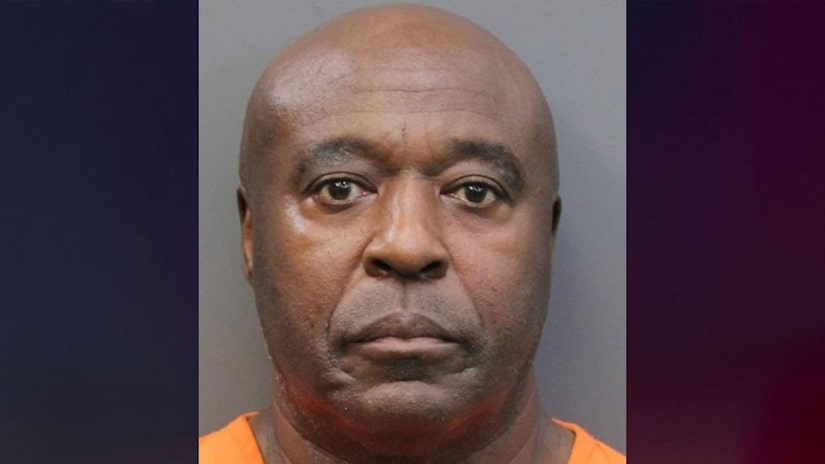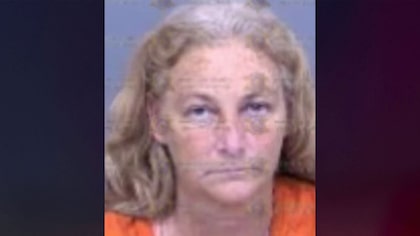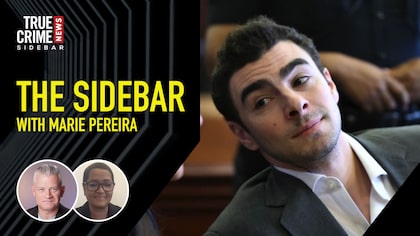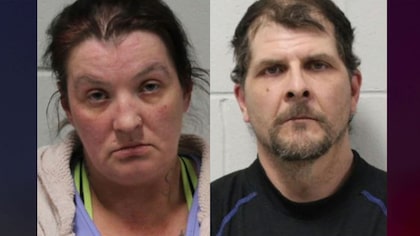Exclusive: 'BTK Killer' sends 'murder roadmap' to Crime Watch Daily
11/02/2016 11:55 am PDT
He truly was the monster living next door. To friends and family, Dennis Rader was a good father, a regular churchgoer, and he even volunteered with the Boy Scouts. But Rader was living a secret double life, one filled with murderous rage.
Rader sent what you could call a "maniac's roadmap to murder," a detailed hand-drawn map, to Crime Watch Daily, by one of the most deranged and twisted serial killers in American criminal history.
Dennis Rader, a monster who hid behind the mask of your average every day guy next door, as he strangled young girls, moms and grandmothers in Wichita, Kansas under the name of "BTK."
"To bind, to torture, to kill," said former Sedgwick County, Kansas District Attorney Nola Tedesco Foulston.
Dennis Rader is the last person anyone would ever suspect of being a sadistic serial killer.
"The helpful neighbor, the good father, the regular churchgoer, the president of his congregation, a reliable worker," said Prof. Katherine Ramsland, author of Confession of a Serial Killer: The Untold Story of Dennis Rader, the BTK Killer.
Rader served the city as a good public servant in various jobs, including dogcatcher and compliance officer, and was even a volunteer scout master.
"You could not have imagined somebody that was walking around the streets being a compliance officer, measuring people's grass, was a prolific serial killer in this community," said former D.A. Foulston.
But Rader's atrocious crimes would hold the Midwest city in the grip of fear as he chronicled his evil deeds with grotesque photographs and sketches of his victims, along with his own perverse re-enactments of their final moments alive.
"Taking pictures of himself being strangled, pictures of himself in women's clothing that he had gotten from crime scenes," said Foulston.
"The most erotic image he can imagine is the look of a person in utter terror," said Ramsland.
Rader would claim the lives of 10 innocent residents of Wichita, most of them women whom he strangled with his bare hands or with their own clothing, including stockings and pantyhose.
Rader took photos of himself dressed as his victims, playing them in their death scenes to relive the erotic pleasure he got from murdering them.
"So he can go back and look at them time after time and still get some type of erotic buzz as a result of his own handiwork," said Foulston.
"He wasn't the balding paunchy guy who got arrested," said Ramsland. "He was a good-looking guy who was strong enough to overpower people, and felt very confident of himself."
That would come in handy when Rader began acting out his murderous double life.
"He thought of himself in many different ways, but one of them was a 'James Bond' type of spy. He liked the idea of living a double life, of having this ordinary-seeming existence, but at the same time he's stalking people," said Ramsland.
Ramsland knows Rader better than anyone. The professor of forensic psychology and director of the Master's Program in Criminal Justice at DeSales University in Pennsylvania has made studying serial killers her life's work.
"Dennis Rader was not the first serial killer I talked to. I certainly had studied hundreds of them in detail," said Ramsland.
She's published her findings in 58 books, including her latest about Dennis Rader after talking to him in person at prison and on the phone for the past five years.
"The signs were there," said Ramsland. "Someone could have picked them up."
Professor Ramsland developed a relationship with Rader.
"I knew there were things that he hadn't talked about with anybody else," said Ramsland. "I knew I had to build toward that by having him trust me.
"He wanted to be Wichita's bogeyman that could show up anytime, anywhere, and you never knew where he was going to be next," said Ramsland. "What he wanted to be was 'Jack the Ripper.'"
Ever since he was a young teenager, he got turned on by the images of captive women in his collection of those old "true-detective" magazines.
"Binding them and taking pictures and telling them they are going to die. That was seared into Rader's adolescent consciousness as the ultimate thing he wanted to see in his victim's faces," said Ramsland.
Imagine returning home from school, walking into your house, and finding most of your family murdered, your mother and father strangled, your little sister hanging from a pipe in the basement. That's what happened to Danny, Carmen and Charlie Otero. Danny was 14 at the time, Carmen, 12, and Charlie was 15. Rader has already fled, leaving three terrified children orphaned and traumatized for the rest of their lives.
The monster who sent the family to their graves, Dennis Rader, apparently remains unrepentant about his hideous crimes. And now he's bringing the case back to life.
The "BTK Killer" was convinced he would get caught after committing his first murders. In fact, Rader reveals he accidently left something incriminating at the victims' home. So hours afterward, he returned to the scene to get the item and escape unnoticed. From that day on, the more he got away with his crimes, the more he says it fueled his desire to kill.
Ten unsuspecting residents of Wichita, Kansas have fallen prey to Dennis Rader, the crazed serial killer who calls himself "BTK." Then the killings suddenly stopped, and the BTK case went cold for the next 13 years.
"Dennis Rader decided to announce his 30th anniversary," said former D.A. Foulston.
He claimed responsibility, under his alias of "BTK," for all of his 10 killings in a bizarre media blitz of local TV stations, newspapers, and the police.
"He got these Barbie dolls, they were 'fashion dolls,' I guess he called them, where he would make them look like the victims, and he would send them in cereal boxes, because he's a serial killer," said Ramsland.
Rader also sends his sketches, photographs and mementos of his murders, along with his detailed writings about the killings, to get cops scrambling.
"So they had to follow all those leads," said Ramsland.
But police got the last laugh when Rader foolishly sends a newspaper a computer disk that they can trace to his church, where he had downloaded it.
"The excitement was palpable," said Foulston. "The computer people, all the detectives, I was around when they slipped this thing into the computer and up pops Dennis Rader."
Rader was arrested near his home in February 2005.
"And then he folded like a cheap suit," said Foulston.
Rader eventually pleaded guilty to 10 charges of first-degree murder.
"Rader got 10 life sentences," said Ramsland.
And now he's brought the case back to life, asking author and professor of forensic psychologist Katherine Ramsland to give Crime Watch Daily a map he drew just for the show.
Rader included a handwritten key to the map explaining how to find a grisly so-called "buried treasure" of drawings, photos and evidence of his maniacal thrill-kills, and perhaps other murders police are not even aware of.
"There are 'hidey-holes' that were never discovered by anybody and where items still could be buried," said Ramsland.
In a recording of a prison telephone interview, Rader gives more clues about the map to Professor Ramsland for Crime Watch Daily.
"I drew a big circle around it, and there is a lot of different things in that area," Rader says on the recording.
"He realized there is still a lot of stuff out there that nobody has found," said Ramsland. "It certainly didn't end up in police custody."
"A lot of the time I would get rid of stuff. I would bury it," Rader says on the recording.
And he talks about his so called "hidey-holes" on the map.
"One of them was real elaborate," Rader says on the recording. "I built it underneath the house and I used a plastic packer and formed a concrete thing around it, so you surely wouldn't find it."
Rader said many of the hidey-holes are in abandoned barns and old sheds.
"There is quite a few of those around Kansas," said Rader.
Crime Watch Daily gave the map and the key to it to the Wichita Policed Department, and will continue to investigate the BTK Killer's "roadmap to murder."




